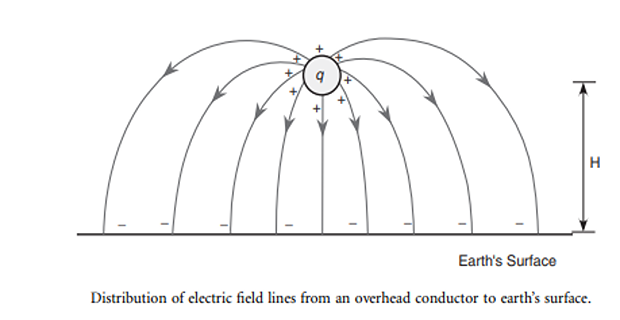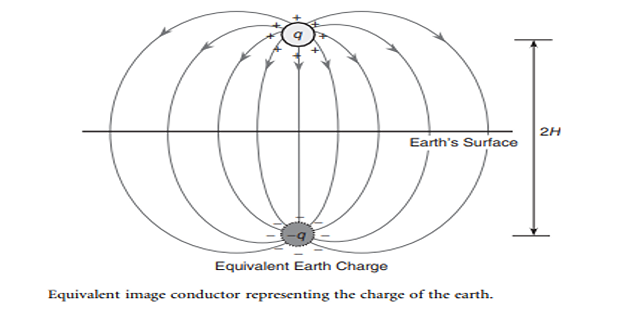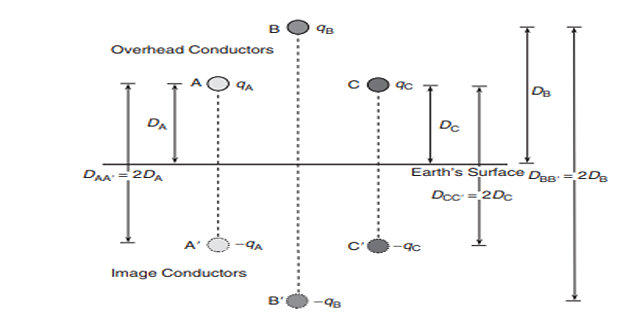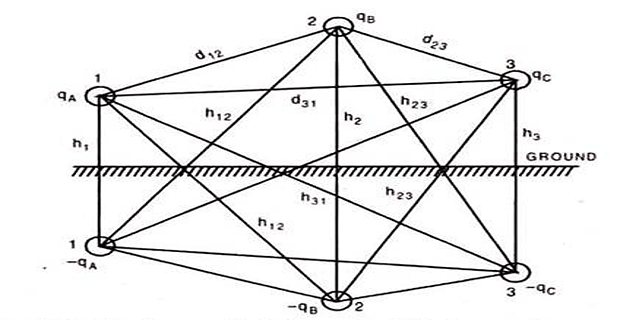Demonstrative Video
Effect of earth on the capacitance of a three-phase line



Earth alters the electric field of the line, hence the capacitance is affected
Assume earth to be a perfect conductor- horizontal plane of infinite extent
Electric field of the charged conductor above the earth not the same if equipotential surface of the earth were not present
Consider a single conductor with an earth return
Charge comes from earth to reside on the conductor and a potential difference exists between the conductor and earth
The earth and conductor have charge equal in magnitude but of opposite sign
The electric flux from the charges on the conductor to the charges on the earth is perpendicular to the earth’s equipotential surface since surface is assumed to be a perfect conductor
Imagine a fictitious conductor (same size and shape) lying directly below the original conductor at the same distance
Earth is removed and equal and opposite charge is assumed on the fictitious conductor
plane midway acts as equipotential plane

Applying the method of images and assuming the line is transposed carrying the charges \(q_{a}, q_{b}\) and \(q_c\) and occuping position 1, 2, and 3, respectively, in the first part of the transposition cycle.
- \[ V_{ab}=\dfrac{1}{2\pi\varepsilon}\left[q_{a}\left(ln\dfrac{D_{12}}{r}-ln\dfrac{H_{12}}{H_{1}}\right)+q_{b}\left(ln\dfrac{r}{D_{12}}-ln\dfrac{H_{2}}{H_{12}}\right)+q_{c}\left(ln\dfrac{D_{23}}{D_{31}}-ln\dfrac{H_{23}}{H_{31}}\right)\right] \]in position 3 in position 2, and in position 1, With
Knowing the sum of charges is zero, finally
equation* C_n= F/m
Effect of earth is to increase the capacitance of the line
If conductors are very high above ground, \(H_1\) and \(H_{12}\), and others are nearly equal
\(\checkmark\) effect of ground is neglected, except when sum of three line currents is not zero.